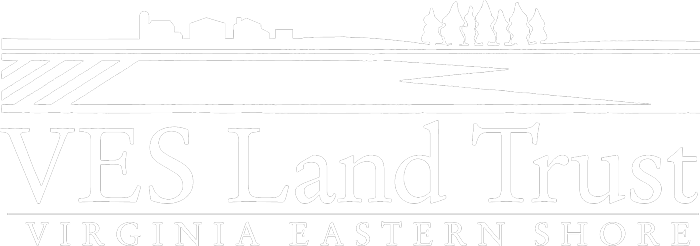This section covers land management and stewardship including farmland, forest, shoreline, wildlife habitat, and invasive species. Those actively managing the land will find professional resources, research, and articles applicable to those subject areas in this section.
Farmland
Because of local landowners and their commitment to the conservation of the Eastern Shore, VES Land Trust protects approximately 4,400 acres of farmland. Agriculture when properly managed provides a variety of conservation benefits. Conservation practices may increase soil health, protect water quality, and provide habitat for pollinators. Soils also store carbon.
-
The following are partners that work within this field. This is a list of resources and not a recommendation for any particular service provider. Some of these providers also offer habitat and water conservation programs that are compatible with farm management.
• Eastern Shore Soil and Water Conservation District
• Natural Resource Conservation Service
• Virginia Tech Agricultural Research and Extension Center
• Resource Management Associates
• Farm Bureau (Accomack, Northampton) -
-
-
-
Forest
Because of local landowners and their commitment to the conservation of the Eastern Shore, VES Land Trust protects approximately 5,850 acres of forest. Forests provide a variety of conservation benefits. Forestry can be practiced to enhance wildlife habitat, establish new forest stands, protect and establish species at risk, protect soil and water quality, and help abate storm water. Forests also store carbon.
-
The following are partners that work within this field. This is a list of resources and not a recommendation for any particular service provider.
• Virginia Department of Forestry
• Resource Management Associates -
A Forest Management Plan (FMP) is designed to insure the maintenance of good quality growing stock of native tree species while protecting soil stability, water quality and other conservation benefits, including scenic, riparian and wildlife habitat benefits. The Department of Forestry or other service provider can develop an FMP to meet your goals for the property. If you own a property under easement with VES Land Trust, a FMP is required before you complete any forestry
-
-
• Virginia Department of Forestry, Press Release, April 21, 2022
Shoreline
Because of local landowners and their commitment to the conservation of the Eastern Shore, VES Land Trust protects approximately 77 miles of shoreline, 12.5 miles of perennial streams, and 3,000 acres of wetlands. The most common shoreline challenges are erosion and clearing in the 100 foot waterfront buffer. A healthy buffer of vegetation along these sensitive water resources can reduce erosion, create important habitat, and prevent pollutants like sediment from entering the waterways. Increased flooding, higher tides, and saltwater intrusion are also concerns.
-
The following are partners that work within this field. This is a list of resources and not a recommendation for any particular service provider.
-
-
The Virginia General Assembly enacted the Chesapeake Bay Preservation Act (the Bay Act) in 1988 to protect the waters of the Chesapeake Bay from nonpoint source pollution, such as runoff. The local governmental bodies, Accomack and Northampton County, administer the Bay Act programs and enforce the regulations.
VES Land Trust conservation easements also protect the 100 foot buffer along waterways and shorelines. Generally, this means restrictions on development and preservation of vegetation within the 100 foot buffer.
Conserving the vegetation along these sensitive resources protects the waters we live, work, and play on from pollutants. We recommend contacting your county before pursuing any activity in the Resource Protection Area or waterfront buffer. If you own a property under conservation easement with VES Land Trust, you also need to contact us prior to any activity in the buffer.
Wildlife Habitat
Landowners regularly create or maintain wildlife habitat on their protected property. Some of these efforts are focused on game species like deer, turkey, or waterfowl. However, there’s a lot of interest in and even programs for pollinator habitat and non-game species.
-
The following are partners that work within this field. This is a list of resources and not a recommendation for any particular service provider.
• Natural Resources Conservation Service
• Department of Wildlife Resources
• Department of Conservation and Recreation
• Resource Management Associates
• Ducks Unlimited -
Invasive Species
A native species is one that evolved in a place over a long period of time and therefore is particularly suited to the environment and the other plants and wildlife in that place. An invasive species is not native. Common invasive species are phragmites, english ivy, and privet.
-
The following are partners that work within this field. This is a list of resources and not a recommendation for any particular service provider.
• Natural Resources Conservation Service
• Department of Conservation and Recreation
• Resource Management Associates -
-

